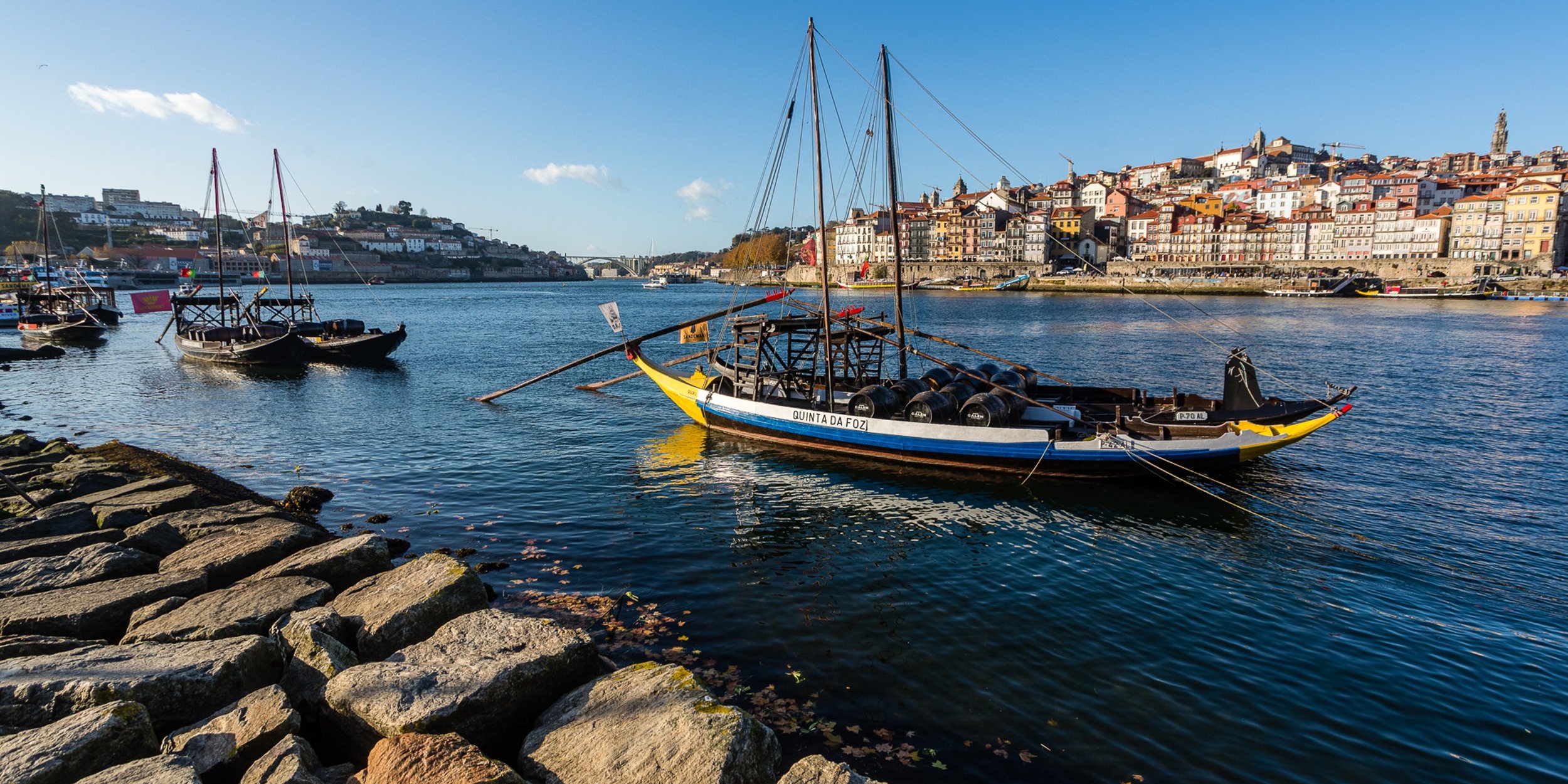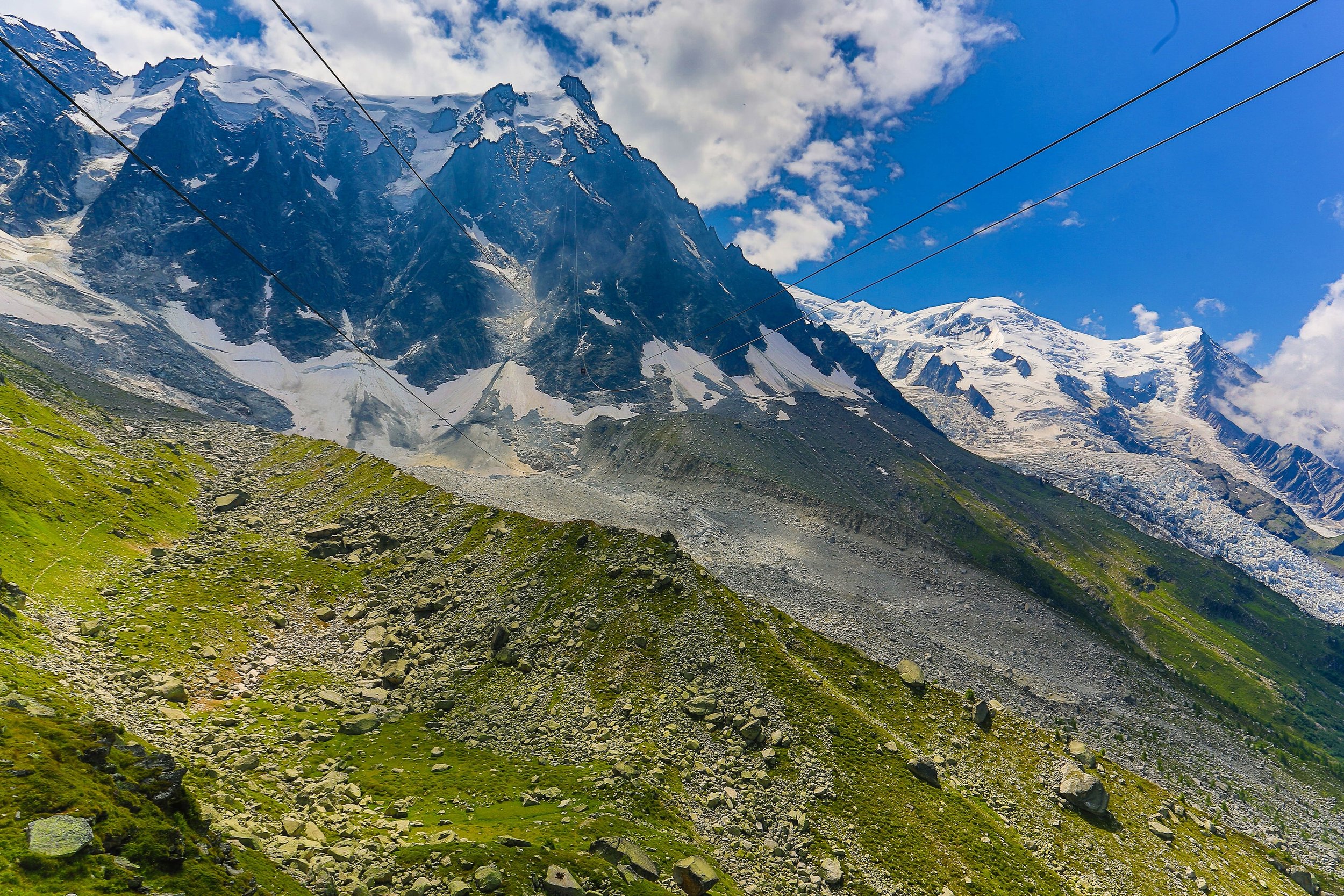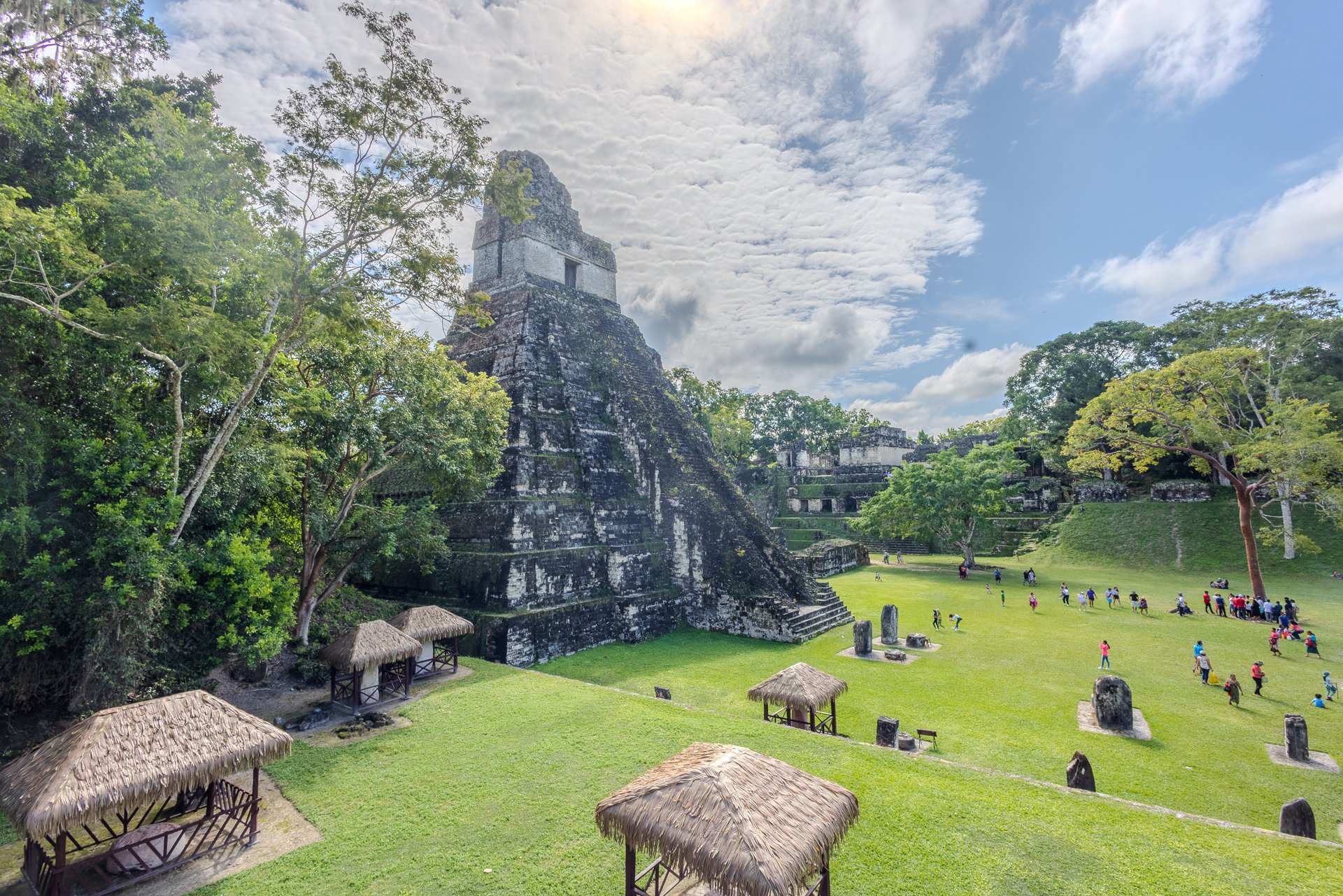Tikal
Tikal, located in the heart of the Guatemalan rainforest, near the Mexican border, is one of the most significant archaeological sites of the ancient Maya civilization. This UNESCO World Heritage site is a sprawling complex of towering pyramids, grand plazas, and ancient temples, all surrounded by dense jungle teeming with wildlife. As you wander through the site, you can almost hear the echoes of ancient ceremonies and bustling city life. The iconic Temple of the Great Jaguar and Temple IV offer breathtaking views over the canopy, especially at sunrise and sunset. Exploring Tikal is not just a journey through history but also an immersion in the natural beauty and rich biodiversity of the region. The combination of cultural heritage and pristine nature makes Tikal a captivating destination for any traveller interested in the mysteries of the past and the wonders of the present.
Sights & Culture
Temple I (Temple of the Great Jaguar)
Temple I, known as the Temple of the Great Jaguar, is one of Tikal's most iconic structures. Standing at an impressive 47 meters high, this towering pyramid commands attention with its striking design. At the top, a distinctive jaguar throne symbolizes the power and might of the ancient Maya civilization. The temple served as a mausoleum for Jasaw Chan K'awiil I, a significant ruler of Tikal, whose tomb lies within. Climbing the steep steps of Temple I, you can imagine the grand ceremonies and rituals that once took place here, adding to the sense of awe and reverence this site inspires.
Temple II (Temple of the Masks)
Opposite Temple I stands Temple II, known as the Temple of the Masks. Though slightly shorter, it is equally impressive, rising majestically to 38 meters. The pyramid is adorned with large stone masks that add an air of mystery and grandeur. These masks, thought to represent deities or powerful ancestors, gaze out over the Great Plaza, underscoring the temple's ceremonial importance. Temple II is dedicated to Lady Kalajuun Une' Mo', the wife of Jasaw Chan K'awiil I, and offers a fascinating glimpse into the role of royal women in Maya society.
Temple III (Temple of the Jaguar Priest)
Rising to 55 meters, Temple III, also known as the Temple of the Jaguar Priest, retains a sense of mystery due to its partially unrestored state. This temple, often overlooked by visitors, offers a raw and authentic experience of Tikal. The structure is shrouded in dense jungle foliage, adding to its enigmatic allure. While the climb to the top is challenging, those who venture up are rewarded with stunning views and a sense of connection to the ancient priests who once performed rituals here.
Temple IV (Temple of the Double-Headed Serpent)
Temple IV, the tallest structure at Tikal, stands at a staggering 70 meters and is known as the Temple of the Double-Headed Serpent. This pyramid offers unparalleled panoramic views over the jungle canopy, making it a prime spot for witnessing breathtaking sunrises and sunsets. The climb to the top is an adventure in itself, and once there, you are treated to a sweeping vista that stretches as far as the eye can see. The sense of isolation and majesty at the summit evokes the grandeur of the Maya civilization at its peak.
Temple V
Reaching 57 meters, Temple V is notable for its steep staircase and excellent views from the top. This pyramid, located on the southern edge of the central area, stands out for its impressive height and unique architectural features. The climb is steep and demanding, but the panoramic views from the summit are well worth the effort. As you ascend, you can appreciate the intricate design and engineering skills of the Maya builders, who created this monumental structure over a thousand years ago.
Temple VI (Temple of the Inscriptions)
Temple VI, known as the Temple of the Inscriptions, is distinguished by its long hieroglyphic inscription on the back of the roof comb. These inscriptions provide invaluable insights into the history of Tikal, detailing significant events and rulers. The temple itself is less visited, offering a quieter, more contemplative experience. As you explore Temple VI, the hieroglyphs come alive, telling stories of power, conquest, and the sophisticated culture of the ancient Maya.
Great Plaza
The Great Plaza is the heart of Tikal, surrounded by Temples I and II, the North Acropolis, and the Central Acropolis. This central area served as the main gathering place for ceremonies, rituals, and social events. The plaza is dotted with altars and stelae, each carved with intricate details that narrate the history and achievements of Tikal's rulers. Standing in the Great Plaza, you can almost hear the echoes of ancient celebrations and imagine the vibrant life that once animated this grand space.
Central Acropolis
The Central Acropolis is a sprawling residential complex that likely housed the city’s nobility and administrative functions. Consisting of interconnected courtyards and rooms, this area offers a fascinating glimpse into the daily lives of Tikal's elite. The layout and architecture suggest a highly organized and sophisticated society, where governance and ceremonial activities were intertwined. Exploring the Central Acropolis, you can wander through the remains of palaces and administrative buildings, each telling its own story of power and privilege.
MUNDO PERDIDO (LOST WORLD COMPLEX)
Mundo Perdido, or the Lost World Complex, is one of the oldest parts of Tikal. This area features a large pyramid and several smaller structures used for astronomical observations. The central pyramid, known as the Great Pyramid, was a focal point for the Maya's sophisticated understanding of astronomy and timekeeping. As you explore Mundo Perdido, the sense of ancient wisdom and scientific prowess is palpable, offering a deeper appreciation for the Maya's intellectual achievements.
The Great Pyramid (Mundo Perdido)
The Great Pyramid, part of the Mundo Perdido (Lost World) complex in Tikal, is one of the oldest and most significant structures in the archaeological site. Standing at approximately 32 meters high, this pyramid is a central feature of the Mundo Perdido complex, which served as an important astronomical and ceremonial center during the early periods of Tikal's history.
Constructed around 300 BC, the Great Pyramid is notable for its distinct architectural style, which differs from the later, more ornate structures found in other parts of Tikal. Its design reflects the early Preclassic Maya traditions, characterized by broad terraces and steep staircases leading to a flat summit, which likely served as a platform for religious ceremonies and astronomical observations.
Sloping Panel Temple
This temple gets its name from the distinctive sloping panels that adorn its façade, an architectural element that is relatively rare among the Maya ruins. The panels are thought to have had both aesthetic and structural purposes, contributing to the stability and grandeur of the building.
The Seven Temples Plaza
The Seven Temples Plaza is a ceremonial complex featuring seven small temples arranged in a row, along with other structures. This plaza was likely a significant site for religious rituals and community gatherings. The uniformity and alignment of the temples reflect the precision and architectural skill of the Maya builders. Walking through the Seven Temples Plaza, you can envision the spiritual and communal activities that once filled this sacred space, connecting the people of Tikal with their gods and ancestors.
Wildlife
Tikal, nestled within the lush rainforests of Guatemala, is not only a treasure trove of ancient Mayan ruins but also a haven for diverse wildlife. The surrounding jungle teems with life, offering visitors a chance to encounter a wide variety of animals in their natural habitat.
Howler Monkeys One of the most iconic sounds of Tikal is the deep, resonant roar of howler monkeys. These primates are often heard before they are seen, their calls echoing through the jungle canopy. Howler monkeys can be spotted lounging in the treetops, their black fur blending with the shadows as they move from branch to branch.
Spider Monkeys More agile and acrobatic than their howler counterparts, spider monkeys are another common sight in Tikal. These energetic primates swing effortlessly through the trees, using their long limbs and prehensile tails. They are often seen in groups, playing or foraging for fruits and leaves.
Coatis On the forest floor, you might come across coatis, also known as coatimundis. These raccoon-like mammals are curious and often seen in groups, snuffling through the underbrush with their elongated snouts. Coatis are quite used to human presence and may approach closer than other wildlife, providing excellent photo opportunities.
Birds Tikal is a birdwatcher's paradise, home to over 300 species of birds. The vibrantly colored keel-billed toucan, with its large, rainbow-hued bill, is a standout. Scarlet macaws, with their striking red, blue, and yellow plumage, add a splash of color to the green canopy. You might also spot parrots, motmots, and the elusive orange-breasted falcon.


































